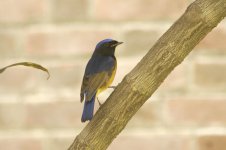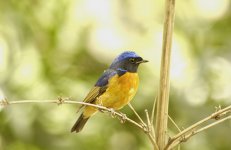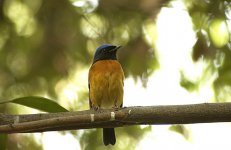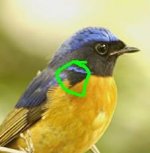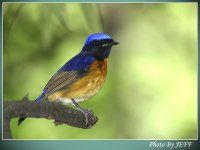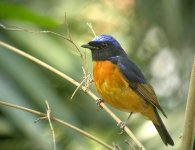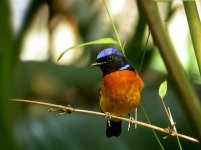melop
A biology student
[New Photos Added] What Niltava sp. is it?
Hi, I'm not sure about this Niltava.
The initial idea is Niltava vivida, but my field guide says that the male of this sp. 's rufous color form a 'V' shape on the neck, which I can't find in the photo.
My current idea is Niltava davidi, but it's unsual here in Guangdong, China.
Another possibility is Niltava sundara which is very similar to N. davidi.
And the bird seems to be a juvenile, because his wing is still rufous.
Any ideas? Thanks!
Hi, I'm not sure about this Niltava.
The initial idea is Niltava vivida, but my field guide says that the male of this sp. 's rufous color form a 'V' shape on the neck, which I can't find in the photo.
My current idea is Niltava davidi, but it's unsual here in Guangdong, China.
Another possibility is Niltava sundara which is very similar to N. davidi.
And the bird seems to be a juvenile, because his wing is still rufous.
Any ideas? Thanks!
Attachments
Last edited:




